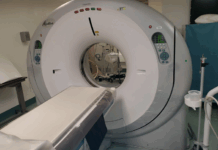The last census of the population of Romania was carried out on January 25, 1948. According to this census, the total population was 15.9 million. A person who is located as follows in individual areas:
In Muntenia (including Bucharest), the worst part lives, almost one third of the total population-5.0 million. Man, or 31.4%, in Transylvania — 3.4 million.- 21.6%, in Moldova — 2.6 million.- 16.4%, in Oltenia —
1.7 million. — 10.7%, in South Bukovina — 300 thousand. -1.9%, Krishana-Maramuresh –1.4 million. — 8.8%, banite — about 1 million. — 6% and Dobruja — 500 thousand. Man — 3.2%.
The population density in the country is equal to 66.8 nitrates per 1 sq. km. In individual regions, it is placed unevenly. In Muntenia, the density is 95.2, 70.5 in Oltenia, in the southern Bukovina — 68.0, in Krishan — Maramuresh — 65.7, in Moldova — 58.3, in Transylvania — 54.7, 48 in the banat , 3 people. per 1 sq. km.
The most densely populated by the foothills of Muntenia, especially in its central part, in the area of the triangle Bucharest — Pitesti — Ploshti, as well as Suchava County.
In a number of industrial areas — in Prakhov, Dymbo — Vice, Ilfov, the density reaches 200 and more people per 1 sq. km. The mountainous regions, the arid plains of the southeast, the Danube Danet and the lower reaches of the rivers Seret and Prut were weaker.
Of the total population, 3.7 million. Man, or 23.4%, lived in cities, and the remaining 12.2 million. residents, or 76.6%, in villages.
In connection with significant works carried out by the People’s Democratic Government on the country’s industrialization, the urban population is actually increasing.
The highest percentage of the urban population in Moon — Tenia — 32.4. In second place Dobruja — 29.1%.
Of the total population of men, there were 7.7 million., women — 8.2 million. Human.
The average population growth was in 1941-1946. 21.4%. In terms of mortality, Romania occupied one of the first places in Europe. Social diseases were a genuine scourge of the working population. According to the official figures of the Romanian press, in 1944. There were 6u0 thousand in the country. patients with tuberculosis. According to the Schynthei newspaper, over the past 20 years have died as a result of poor living conditions of more than two million children.
The People’s Democratic Structure holds broad measures to improve the working population. Much attention is paid to the protection of motherhood and children. The number of orphanages, sites, gardens is growing from year to year. In 1948. There were 930 of them, and in August 1949. This figure increased to 2,226. The number of beds in rural and urban maternity buildings increased from 933 in 1948. up to 3 755 in 1949. For the first time in the history of the country, maternity hospitals in the villages were organized.
All working people receive paid leave, uniform medical care, and state assistance is provided to many children. The number of sick leave was in 1949. 3 times more than in 1947., and 4 times more than in 1944. A network of holiday houses and sanatoriums is being expanded and constantly expanding and constantly expanding. In 1949. 195,000 workers held their holidays in rest homes and sanatoriums, the vast majority of which are equipped in the most beautiful places in the country, in the best resorts, in the former royal palaces, landowner estates and rich villas of Romanian capitalists.








